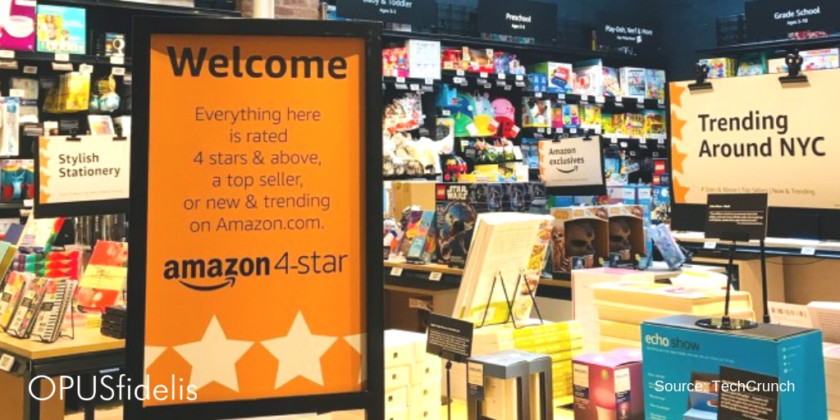Amazon is opening a new store in New York City called Amazon 4-star. Not limited to books or groceries like their other brick and mortar locations, Amazon Books and Amazon Go, the store will feature a variety of their top-selling products, all rated 4 stars or higher.
Everything in the store is reduced to statistics – products are grouped by categories such as “Most Wished-For,” “Trending Around NYC,” and “Frequently Bought Together.”
Digital price tags will show the Prime price and the list price, along with the product’s average rating and number of reviews. Customers who aren’t Prime members are given the option of a free 30-day trial to access the reduced prices.
Amazon said on their blog:
We created Amazon 4-star to be a place where customers can discover products they will love. Amazon 4-star’s selection is a direct reflection of our customers—what they’re buying and what they’re loving.
In a sense, Amazon is performing the ultimate customer pleasing act- giving customers what they want. It’s a new step into data-driven inventory for brick and mortar stores. According to an article in Digiday:
“It’s the absolute best use of data we’ve seen so far,” said Jim Cusson, president of retail marketing agency Theory House. “Any retailer’s biggest concern is inventory carrying cost. If you can curate a store with guaranteed success of items on the shelves, you have a significant advantage.”
According to a recent report from consultancy IHL, retailers tie up significant amounts of capital anticipating customer purchase behavior by holding safety stock in the event some items beat expectations. IHL estimates that retailers in North America collectively tie up $24 billion in safety stock to compensate for poor inventory management. Items that don’t sell are often sent to discount retailers to offset some of the cost, but if retailers could more effectively predict how products will do at the outset based on customer data, discount retailers stand to lose.
Will data-driven, multi-brand retail be the future? While giants like Amazon have the advantage of big data, smaller companies can take a cue from their experiments. What data do you have from your customers that you could take into consideration when serving them?
Whether it’s online reviews, customer-feedback surveys, top products sold, or items with the most engagement online, take the time to consider the data that you have. By putting that data into action, you can can put your company ahead and better meet your customers’ needs.


